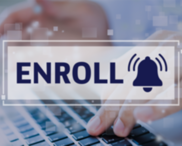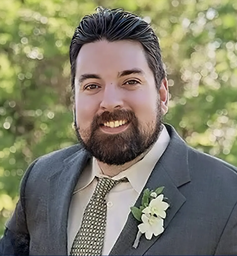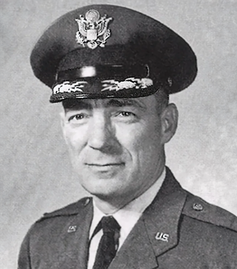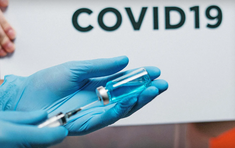|
Resources you can share during Suicide Prevention Month

|
|
Free emergency care for eligible Veterans in acute suicide crisis

|
How you should report a Veteran’s emergency care to VA

|
CHAMPVA Claims: Avoid payment pause with direct depost

|
|
|
V A "G O O D N E W S" S T O R I E S
|
|

As a trusted health care professional, you play an important role in keeping our Veterans safe. September is Suicide Prevention Month, and we encourage you to visit the VA website, where you can find suicide prevention information and resources to share with your Veteran patients who may need support. The website includes information on safely securing firearms and medications, VA S.A.V.E. Training, support options for Veterans facing common life challenges, and more.
Please share this information with your Veteran patients! We thank you for your continued support.
|
|
|

Veterans experiencing an acute suicide crisis have access to free emergency care, even if they are not enrolled in VA’s system. An example of an acute suicide crisis can be when the Veteran is considering taking action to immediately end their life.
Eligible Veterans can go to any VA or non-VA emergency department, and VA will cover the costs for treatment, emergency transportation, and up to 30 days of related inpatient and 90 days of outpatient care, including prescriptions.
What makes a Veteran eligible?
Veterans don’t have to be enrolled in the VA health care system, but must meet one of the following criteria to be eligible for this benefit:
-
Former service members who were discharged or released from active duty under conditions other than dishonorable after more than 24 months of active service.
-
Former service members, including reserve service members, who served more than 100 days under a combat exclusion or in support of a contingency operation either directly or by operating an unmanned aerial vehicle from another location who were discharged under conditions other than dishonorable.
-
Former service members who were the victim of a physical assault of a sexual nature, a battery of a sexual nature, or sexual harassment while serving in the armed forces.
An important additional element that authorizes VA to provide, pay for, or reimburse for these services is the emergency provider’s or trained crisis responder’s diagnosis that the Veteran is in acute suicide crisis. Without that clear diagnosis, VA is not authorized to deliver the benefit.
Remind all of your Veteran patients that if they are in an acute suicidal crisis to call 911 or immediately go to the nearest emergency medical facility for care and tell the staff they are a Veteran. You can read more about this benefit on the VA News website.
|
|
|

-
To start the authorization process, care coordination, and potential transfer to a VA facility, use VA’s Emergency Care Reporting (ECR) portal or call 844-72HRVHA (844-724-7842).
-
You will need to record the notification identification number assigned through the ECR portal or by phone to retrieve authorization decision information on emergency events. VA no longer includes Veterans’ personal identifying information in outgoing correspondence.
-
You may also need to contact the local VA medical center to coordinate the Veteran’s transfer and follow-on care, if necessary.
In most instances, eligible Veterans’ non-COMPACT-related emergency care at an in-network community facility will be authorized if VA is notified within 72 hours of the start of care. Please include a valid email address for decision correspondence.
Your timely reporting of emergency care ensures Veterans receive the help they need, and administrative and clinical requirements are met, allowing VA to pay for Veterans' care. It also helps reduce the Veteran’s stress and worry when they are vulnerable and recovering from their emergency.
Resources
|
|
|

If you take patients under the Civilian Health and Medical Program of the Department of Veterans Affairs (CHAMPVA), you must enroll in electronic funds transfer (EFT) to get your claims paid. If you have not set up EFT, your claims payments will be paused until your enrollment is complete.
You may have questions about making the switch. We have answers.
Is switching to EFT required or optional?
Getting paid by EFT is a federal requirement and is not optional.
What’s in it for me?
By enrolling in EFT payment, you help ensure:
- CHAMPVA claim payments are secure & efficient.
- Compliance with federal mandates.
- Veteran family members’ access to benefits is safeguarded.
How do I enroll?
Visit the VA Financial Services Center (FSC) Customer Engagement Portal, and complete the Payment Account Setup webform to enroll. Review the Vendor Webform User Guide for step-by-step instructions.
Who do I call for help with the webform?
Call the FSC help desk at 877-353-9791.
About CHAMPVA
CHAMPVA is a health care program for qualified spouses, widows(ers), and children of eligible Veterans. Through CHAMPVA, VA shares the cost of certain health care services and supplies with eligible beneficiaries.
More Information:
|
|
|
|
E D U C A T I O N & T R A I N I N G
Program Description: Primary care plays an integral role in suicide prevention. Although several suicide prevention resources for primary care already exist, it is unclear how many have been created specifically for older Veterans. This virtual presentation will help summarize those available resources and offer you a better understanding of suicide risk management for older Veterans seen in primary care.
Location: VHA TRAIN
Credit/hours: One (1)
Accreditations: ACCME, ACCME-NP, ANCC, APA, ASWB, JA IPCE, NBCC, NYSED-SW, NYSEDP
Suicide Prevention: Public Health Monthly Suicide Postvention Recording
Program Description: This webinar describes the widespread impact of suicide loss, including the impact of suicide loss on providers. This training will also offer recommendations and resources to assist you in developing and/or enhancing your team's post-suicide intervention practices.
Location: VHA TRAIN
Credit/hours: One (1)
Accreditations: ACCME, ACCME-NP, ACPE, ANCC, APA, ASWB, JA IPCE, NYSED-SW
Preventing Suicide Through Lethal Means Safety and Safety Planning
Program Description: This course provides updated lethal means safety training and resources for VHA facility suicide prevention coordinators and other mental-health/suicide-prevention clinicians.
Location: VHA TRAIN
Credit/hours: One (1)
Accreditations: APA, ACCME, ACCME-NP, ANCC, APA, NBCC, ASWB, NYSED SW
A Review of the Updated Cognitive Processing Therapy Manual
Program Description: This presentation will walk you through the latest research found in the updated cognitive processing therapy (CPT) manual. The training will highlight updates to CPT worksheets and best practices for understanding and contextualizing your patient’s problems. The goal of this training is to help you more effectively deliver CPT to any Veteran seeking help for their PTSD symptoms.
Location: VHA TRAIN
Credit/hours: One (1)
Accreditations: ACCME, ACCME-NP, ANCC, APA, ASWB, JA IPCE, NBCC, NYSED-P, NYSED-SW
Using Genetics to Predict Response to Rehabilitation After Stroke
Program Description: This live virtual training will help you understand the role of intensive task-practice in improving arm mobility in stroke patients. Recent research has identified methods for selecting patients to receive intensive therapy and offers guidance on the timing of therapy programs.
Date: Sept. 26 at 3 p.m. ET
Location: VHA TRAIN
Credit/hours: One (1)
Accreditations: AAPA, ACCME, ACCME-NP, ACPE, ANCC, AOTA, APA, APTA, ASWB, CDR, JA IPCE, NBCC, NYSED-P, NYSED-SW
Introduction to Environmental Health Registry Telehealth Services
Program Description: This training offers health care teams formal training on telehealth and video-connect. It will help users fully appreciate that this technology is going to grow in usage and continue to be recommended.
Location: VHA TRAIN
Credit/hours: One (1)
Accreditations: ACCME, ACCME-NP, ANCC, APA, ASWB, CDR, JA IPCE, NBCC, NYSED-SW
Opioid Safety Initiative
This course promotes evidence-based management of Veterans with chronic pain to improve patient outcomes and decrease incidence of complications associated with opioid prescribing.
Location: VHA TRAIN
Credit/hours: One (1)
Training available through Optum and TriWest
Numerous live and on-demand webinars and trainings are offered by Optum and TriWest to fit your schedule. Check them out!
Interested in more Optum and TriWest news and information? Click here for access to Optum newsletters. TriWest’s Provider Pulse newsletter can be found here.
Questions? If you require assistance, please contact the VHA TRAIN Help Desk by email at vhatrain@va.gov.
How to obtain your credit completion certificate:
Once you complete a credited training, you can obtain your credential certificate(s) in four easy steps:
-
Log in to VHA Train - https://vha.train.org/vha/login
- Go to “Your Learning”
- Go to “Your Certificates”
-
Download your certificate
|
|
|
P O D C A S T & V I D E O

This podcast episode of “She Wears the Boots” features VA provider Dr. Andrea Hekler, who discusses pregnancy loss, how it can heavily impact an individual and their partner, and how VA can support Veterans who have experienced pregnancy loss. If you know a Veteran who wants more information on pregnancy loss. wants more information on pregnancy loss, they can visit the VA webpage for women’s health. You can also visit VA’s Institute for Learning, Education and Development website to listen to more episodes from “She Wears the Boots” and other VA-focused podcasts.
|
|
|

The #LiveWholeHealth video series is a compilation of Whole Health resources you can share with your Veteran patients to help them live healthier and happier. The series consists of more than 200 videos that encourage participation in self-care activities like yoga and Tai Chi and educate viewers on the benefits of healthful practices like mindful eating habits and meditation.
This 5-minute episode focuses on mindful awareness and helps viewers take a moment to be more present and in tune with their surroundings while listening to the calming sounds of nature. You can find this video and more on VA’s #LiveWholeHealth webpage. Veterans can also download the Live Whole Health mobile app, which is designed to assist them in enhancing their overall personal health and well-being.
For more general information, you can visit VA’s main site for all things Whole Health, which is a great starting point to learn about the concept and how VA applies it to Veteran health care.
Be sure to save these resources and share with your Veteran patients!
|
|
|
|
V E T E R A N S P O T L I G H T

Grant Rhine enlisted in the Marine Corps in October 2005 and was stationed in Camp Lejeune, North Carolina. He served as a fire team leader and squad leader with 2nd Marine Division. After four years of service, he pursued higher education at North Carolina State University, where he received a bachelor's degree in English literature.
Rhine went on to work in the automotive quality control industry, started a family, and later went back to school and earned a graduate certificate in business. He is currently enrolled in a Master of Business Administration program at East Carolina University.
While remaining busy with family, work, and school, Rhine still finds time to give back to the Veteran community through his involvement in the North Carolina contingent of “Irreverent Warriors,” a band of Veterans united by humor and camaraderie. Their mission aims at fostering mental wellness and curbing Veteran suicide through various outreach programs and community events.
You can read his full feature on the VA News website.
|

William M. Bower was born in 1917 in Ravenna, Ohio. He attended Hiram College and Kent State University and later enlisted in the Ohio National Guard in 1936. While in the National Guard, Bower was a part of the 107th Cavalry until his honorable discharge in 1938.
Despite having already served, Bower enlisted in the Army Air Forces—the predecessor of the U.S. Air Force—in 1940, where he served in the Aviation Cadet Program, was commissioned as a 2nd lieutenant, and awarded his pilot wings in the same year.
Bower flew in the 17th and 37th Bomb Squadron in Washington before volunteering during World War II. In early 1942, Bower's B-25 aircraft ran out of fuel during a mission in Asia. He and his men bailed out of their aircraft over China and returned to the United States in June of that year. Bower quickly deployed to England only a month later. In recognition of his honorable endeavors, Bower was awarded a Distinguished Flying Cross.
After serving in England, Bower deployed to Italy, where he commanded the 310th Bomb Group, the 593rd Air Force Base Unit, and the 1455th Air Force Base Unit between 1945 and 1947. In 1947, the Air Force became a military branch, and Bower transferred from the U.S. Army Air Forces to the Air Force.
Bower retired on Sept. 1, 1966, with over 5,300 hours of flying during his time in the Air Force alone. He died in January 2011 and is buried at Arlington National Cemetery.
You can read his full feature on the VA News website.
We honor their service.
|
|
|
|
V A "G O O D N E W S" S T O R I E S

Two years ago, VA launched Dial 988 then Press 1, a user-friendly update that made contacting VA’s Veterans Crisis Line (VCL) easier for Veterans and their loved ones.
Since then, VCL has answered more than 1.6 million calls and has seen an increase in daily calls, texts, and chats. This means more Veterans are getting the support they need from caring, qualified responders during times of crisis.
“One Veteran lost to suicide is one too many. We’re supporting more Veterans than ever through the 988 initiative and will not rest in our continued efforts to spread the word that this resource is available and saves lives,” said VA Secretary Denis McDonough.
Advancing efforts to prevent Veteran suicide remains the top priority for VA, and ensuring Veterans and their loved ones know how to reach VCL in their time of need is an important part of that mission.
Today, more than 1,000 responders—many of whom are Veterans themselves—ensure every Veteran has someone to call for support in time of crisis. If you know a Veteran who may be in crisis, tell them to Dial 988 then Press 1 to be connected to the Veterans Crisis Line for support.
|

VA researchers Drs. Ziyad Al-Aly and Yan Xie, and Taeyoung Choi conducted a study of over 5 million Veterans that substantiates the important protective role COVID-19 vaccination plays in preventing Long COVID.
This study is the largest to date that examines the role vaccination plays in preventing Long COVID and trends in the prevalence of Long COVID among Veterans over time. This cohort study ultimately compared 441,583 Veterans who had a coronavirus 2 infection to 4,748,504 Veterans who did not.
Over the study’s one-year period, vaccinated Veterans experienced a 34% decrease in their risk of experiencing any Long COVID symptoms compared to a 26% decrease in risk for unvaccinated Veterans. Overall, COVID-19 vaccination was identified by the VA study team as one of the biggest drivers of this overall decrease of Long COVID incidence over time, finding that 72% of the decrease in Long COVID occurrence was attributable to COVID-19 vaccination.
As COVID-19 cases begin to once again rise across the nation, the findings of this study underscore the important role vaccination can have in protecting our Veterans from infection and reducing the likelihood of long-term health consequences.
Remind your Veteran patients that VA offers the most up-to-date COVID-19 vaccines free of charge to those enrolled in VA health care. You can view this full story on the VA News website, and you can read the study in The New England Journal of Medicine.
|
|
|
 COMMUNITY PROVIDERS: Thank you for all you do to support our Veterans.
|
|
|
|
|